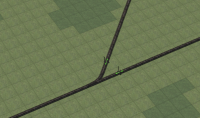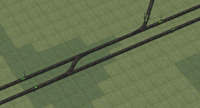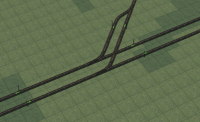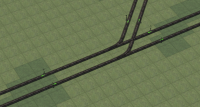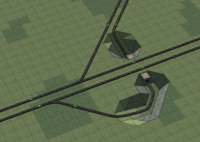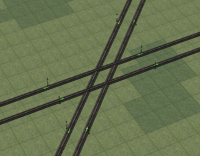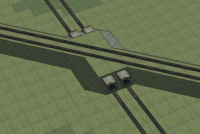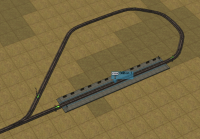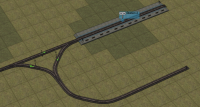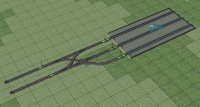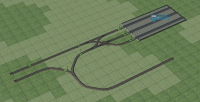Difference between revisions of "Junctions"
(→Terminus Junctions) |
m |
||
| Line 1: | Line 1: | ||
{{Game Manual}} | {{Game Manual}} | ||
| − | All the exaples below have the basic signaling shown on the images, better signalling positions can improve their preformance | + | This section contains a selection of basic junctions that can be used in a railway network in Mashinky. These junctions vary in complexity and utility. The intention of this is to provide fundamental ideas, which can be built upon to create more complex track configurations with higher train capacity. |
| + | |||
| + | All the exaples below have the basic signaling shown on the images, better signalling positions can improve their preformance. | ||
==Y Junctions== | ==Y Junctions== | ||
| − | Y-Junctions act as a convergence or divergence points between two routes on a railway line. Simple solutions | + | Y-Junctions act as a convergence or divergence points between two routes on a railway line. Simple solutions work well, but tend to have significant drawbacks when used at high capacity. |
| + | |||
{| class="wikitable" | {| class="wikitable" | ||
! Image | ! Image | ||
Revision as of 23:52, 2 November 2017
Game Manual
- Basics
- Game content
- Infrastructure
 Railways
Railways
- Signals
- Junctions
 Roadways
Roadways Airports
Airports Landscaping
Landscaping Electrification
Electrification
- Vehicles
This section contains a selection of basic junctions that can be used in a railway network in Mashinky. These junctions vary in complexity and utility. The intention of this is to provide fundamental ideas, which can be built upon to create more complex track configurations with higher train capacity.
All the exaples below have the basic signaling shown on the images, better signalling positions can improve their preformance.
Y Junctions
Y-Junctions act as a convergence or divergence points between two routes on a railway line. Simple solutions work well, but tend to have significant drawbacks when used at high capacity.
Crossings
These are for locations on the tracks where two lines must cross over each other, with no tracked connection between the two.
Terminus Junctions
These are a selection of junctions that go at the end of a railway line, these are designed for both high capacity and the ability to turn the trains around to prevent the locomotives from reversing on their return journey. The max number of trains refers the number of trains can use the station without a risk of causing a blockage. All stations below can have their capacity increased by placing block signals.
